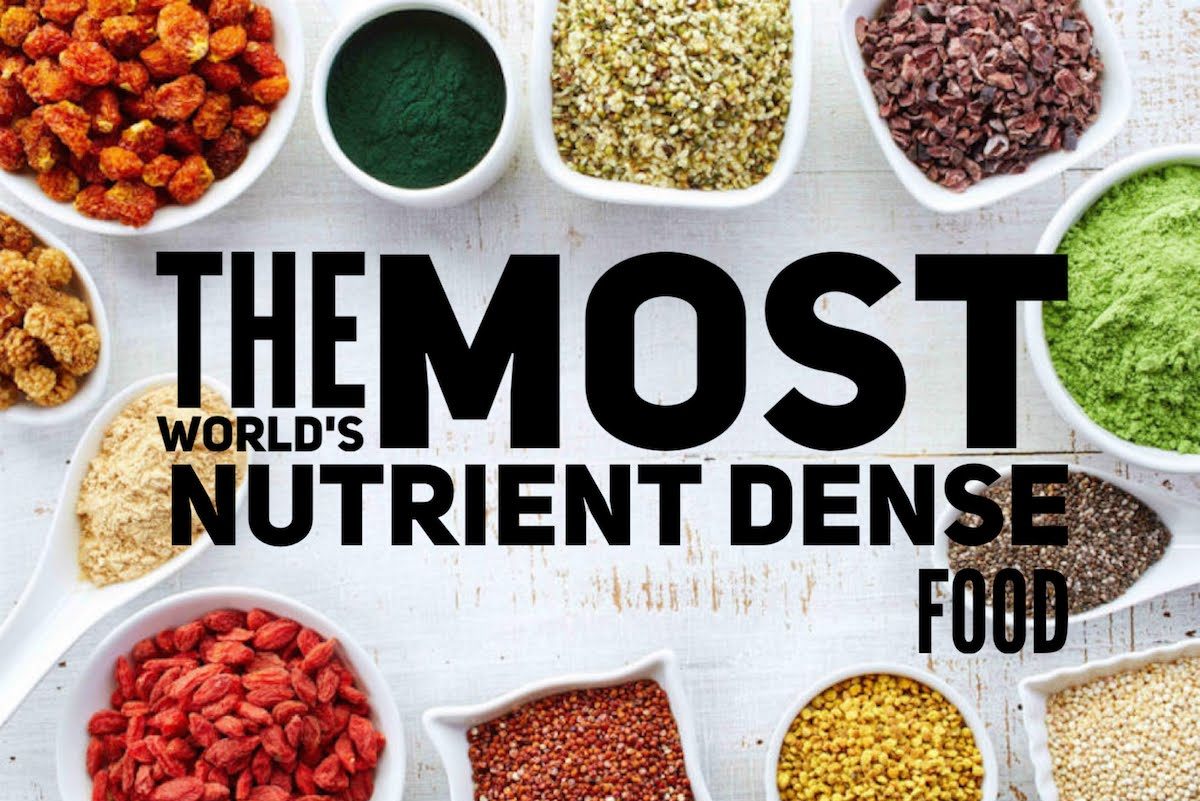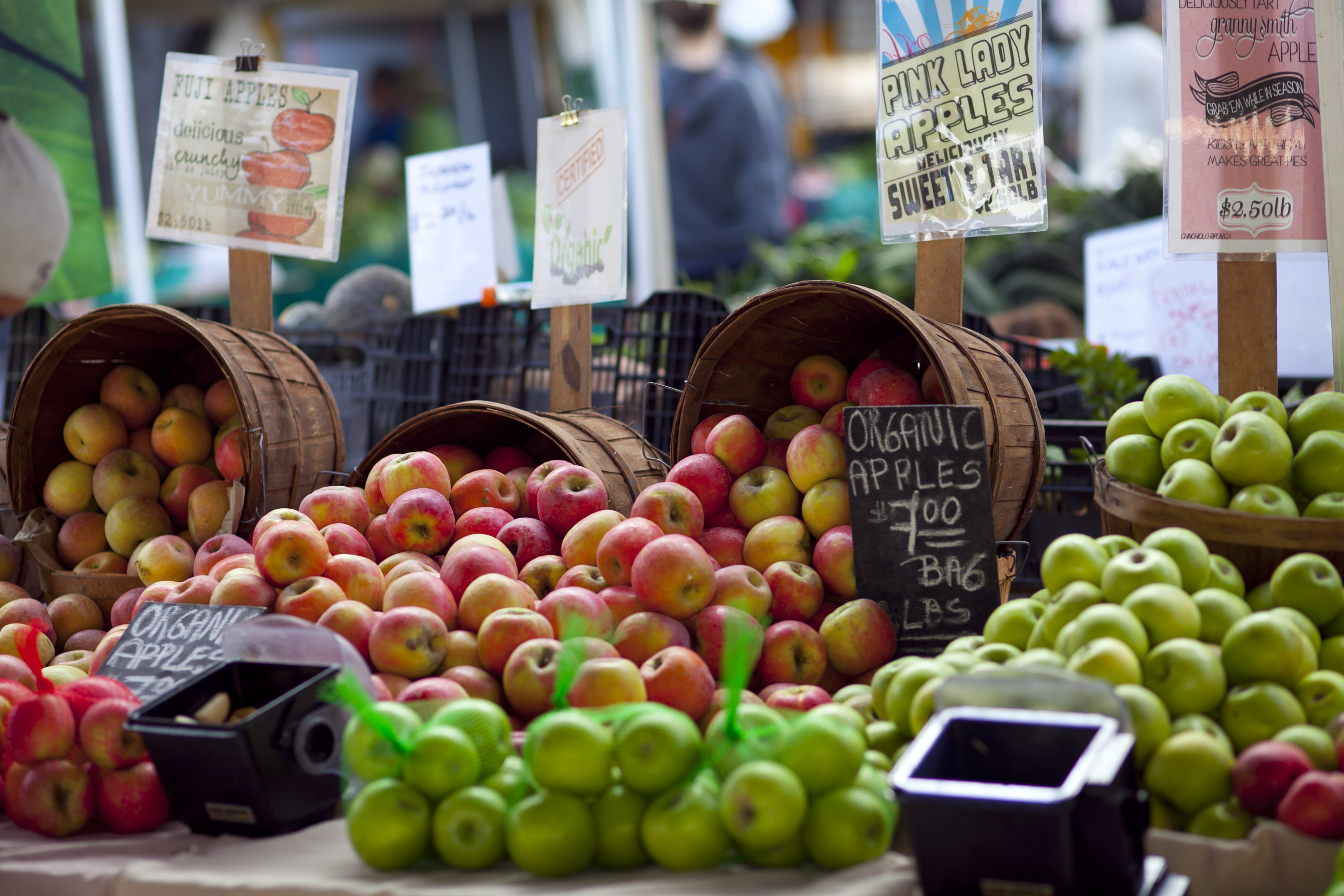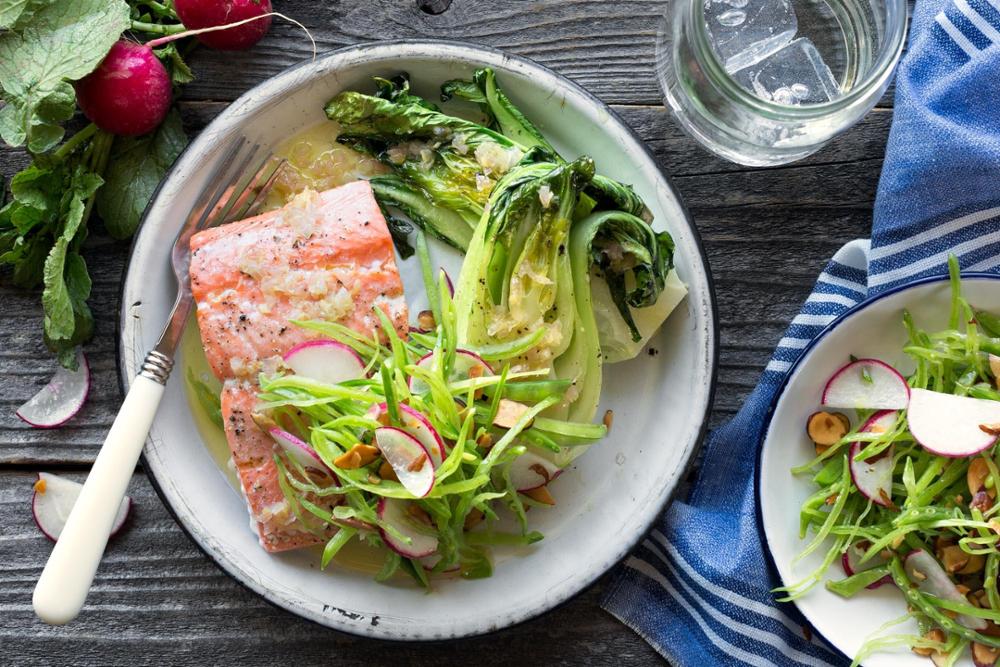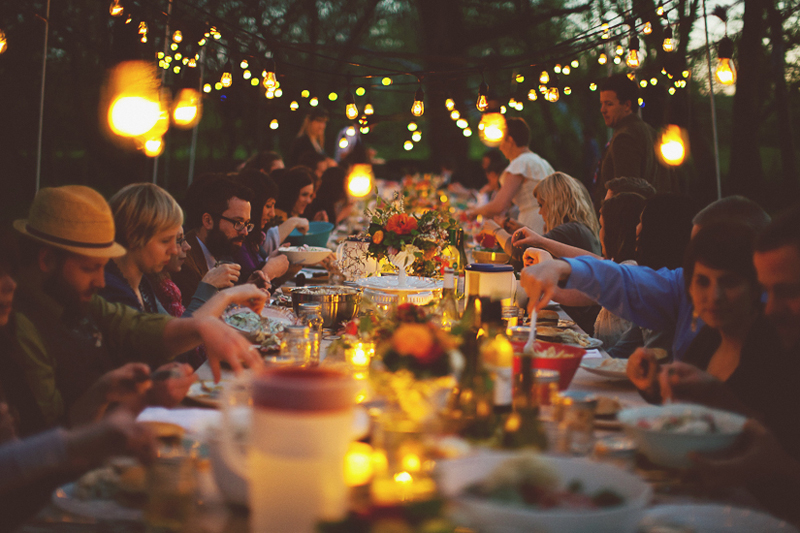Welcome to Healthy Habits
Healthy Habits | Week 4: Real World
Week 4: Real World
DOWNLOADS
“If it doesn’t challenge you, it won’t change you.”
 The culmination of your four-week journey takes you outside the kitchen and into the real world.
The culmination of your four-week journey takes you outside the kitchen and into the real world.
This week you will learn about what constitutes ‘healthy food’ and how to evaluate diet claims. You will learn a new culinary skill and make life easier by trying out one of the dozens or so healthy food apps. I’ll ask you to step outside your comfort zone and try a new cuisine and even invite friends over for dinner (or plan a healthy potluck at work).
Healthy eating and creating healthy habits means you can navigate the real world and push yourself to try new things.
Week 4 Details
- Day 1: Educate Yourself
This week the first challenge starts off with a bang. Watch a food documentary (bonus points for inviting family or friends to view it too) and post a review in the group forum. Reviews can be as short or long as you like.
Driven mostly by independent filmmakers, this genre has grown significantly alongside the increasing interest in how we eat and how our food is produced. It’s also become an area of the film world where you can count on some good controversy since many documentaries focus on exposing some of the shortcomings of the American food system. Whether you’re a food-politics junkie or a fine-dining obsessive, these flicks will help you make the most of your Netflix and iTunes accounts.
- Cowspiracy
- More Than Honey
- Chef’s Table (all seasons and episodes- yes it’s that good)!
- Jiro Dreams Of Sushi
- Food Inc
- Sushi: The Global Catch
- Bite Size and/or Fed Up
- Somm
- Ken Burns: Prohibition
- Cooked
- Beer Wars
- Forks Over Knives
- The Search For General Tso
- Three Stars
- King Corn
- Dive!
- A Place At The Table
- Sustainable
- Just Eat It
- Day 2: Try A Cooking Class (in person, online, YouTube)
If you’re looking to learn some new skills or considering getting healthier, taking a cooking class is the way to go. Cooking is one of the most therapeutic activities in the world, in my opinion. Most people view it as a chore, but cooking can be such a healthy way to nourish your body, mind, and spirit.
Today’s task is to participate in some form of culinary education and share with the group what you learned. While you can attend a class in person, you have other options. Watch a cooking show and attempt to make what they make, follow a recipe on Youtube or watch a short clip on knife skills. Despite having been in the kitchen for 10+ years, I’m still learning new things all the time.
A few healthy resources:
America’s Test Kitchen ($$)
BBC – 25 Skills Every Chef Should Know
Fit Men Cook
Sweet Potato Soul
PannaPanna is technically an iPhone app – 400+ streaming video recipes, master chefs actually show you how to make their favorite dishes, along with the best tips, insider hacks, and how-tos for cooking, baking, and mixing cocktails like a pro.
- Day 3: Download a Food App
Invisible habits run your life.
Whether the first things you do when you get up in the morning are run and make yourself scrambled eggs or snooze the alarm and eat sugary cereal, those are habits. (Ditto healthy snacking, sleeping regularly, and remembering to call your mom once in a while.) And because habits by their nature tend toward inertia, changing them or developing new ones are hard.
Fortunately, many of us carry finely-tuned habit-forming devices in our pockets all day: our smartphones. The best habit apps either prompt you to do something — helping you form a new habit — or help you modify and improve your existing ones.
Here are the best apps for healthy habits.
- Nom – Instead of looking through static food photos for dinner inspiration, scroll through daily live videos from food bloggers and award-winning chefs. And unlike your favorite food channel, you can even read tips from fellow eaters and chime in with your own.
- Harvest – Lets you know what’s ‘in season’ and teaches you how to shop for the best in the bunch as well as store and prepare what you get.
- Thrive Market (US based) – Thrive Market is the Costco of healthy foods. The app lets you browse through healthy cooking ingredients, snacks, and beverages, with the option to search for exclusively gluten-free, vegan, Paleo, or organic options. Best of all, all items are offered at budget-friendly wholesale prices.
- Fooducate – Calorie counts don’t always matter, but 300 calories of cake aren’t the same as 300 calories of kale. Macronutrients (protein, carbs, fat) and micronutrients (vitamins, minerals) are important, too. Fooducate’s food logger will keep track of your nutrient intake as well as your daily calorie count, and even give you healthier alternatives for the junkier foods you input.
- My Fitness Pal – Whether you’re trying to lose weight, testing a more mindful lifestyle, or a living, breathing human being, you need to test this calorie-counting app for at least a week. The autofill fields make it easy to input your meals and snacks, and the ensuing calorie revelations will turn you into a more conscious eater.
- PepperPlate – This time-saving app imports recipes from your favorite blogs, tweaks them to match your health needs, and best of all, scales your chosen recipe for however many people you’re cooking for and generates shopping lists to fit the recipe.
- EatingWell – This app contains a database of exclusively healthy, professionally written and tested recipes illustrated with exquisite original photography that’ll convince you to turn a blind eye to ramen burgers and cheese crusts once and for all.
- Yummly – If you’re a picky eater and find healthy dishes to be bland, this smart recipe searcher will help you find the tastiest meals for your palate, and give you nutritional information on each one. And to leave you with absolutely zero excuses to make your peanut-free vegan dinner tonight, the app is even sync-able with Instacart, which delivers ingredients directly to you.
- Day 4: Brain & Mood Food
Plan a meal that includes one food from each of the three following categories- Magnesium, Fat and B Vitamins.
Eat Magnesium-Rich Foods
Magnesium is the anti-stress hormone, not to mention the host of other benefits it has for your body. Plant-based foods are rich in magnesium and are important to include in your day to optimize mental wellness. Some of the best sources include leafy greens, nuts, seeds, cacao, bananas, avocado, and sweet potatoes.
Eat Good Fats
Healthy fats are like fuel for a good mood. They’re one of the most important things to include in your diet to promote a healthy mood (and a balanced metabolism). Healthy fats also promote good heart health, reduce cholesterol, and contain none of the harmful side effects associated with animal-based saturated fats. Go for raw coconut, avocados, almonds, walnuts, acai fruit, flax seeds, cashews, hemp seeds, chia seeds, pumpkin seeds, sesame seeds or tahini, pecans, and olives. Many of these are also packed with protein, B vitamins, and magnesium to enhance brain health even further.
Eat Your B’s
B vitamins reduce stress in the brain, promote energy, and enhance focus — who doesn’t want all of those things?! Vitamin B12 isn’t the only one important for good health. Other B vitamins, specifically vitamins B3, B5, B6, and B7 are also important. If you eat a plant-based diet, you can easily get enough. Some of the best sources of B vitamins include nuts, seeds, leafy greens, broccoli, avocados, root vegetables, coconut, beans) (including coffee and cacao), bananas, pumpkin, berries, legumes, and whole grains. Mix these up throughout the day for a healthy brain all day long!
- Day 5: Try a New Cuisine
It’s easy to get into a food rut, whether cooking at home or eating out. We tend to find what we like and stick to it. Stepping out of your culinary comfort zone is a risk, and you might not like the food you try. But you’ll never know unless you do. You may even discover a new favorite.
How do you even begin to learn what’s out there that’s different? The same way you search for recommendations for anything, really: Through friends and through the Internet.
Start by asking friends and neighbors if they have been to or heard about any good ethnic restaurants recently. Then move on to the Web, searching restaurant directories, foodie sites and the like. I bet you’ll be surprised by the number of options available to you.
Check ratings and reviews for the restaurants you identify. Once you have a set of possibilities, dive in and try something completely and totally new (Ethiopian? Moroccan?), or try a cuisine that’s just a step off of a cuisine with which you are more familiar. For instance, if you like Thai food, give Vietnamese a whirl.
- Day 6: Get Social
Social wellness is something most of us don’t pay enough attention to, but we should for long-term health. Even if you enjoy alone time, keep in mind that we are all social creatures by nature. We aren’t meant to give ourselves the privilege of being social whenever we can. Eating with others can relieve stress, enhance our mood, and even promote longevity. Even just spending time with friends, family, or chatting with someone at the gym, park, or the office is an important way to stroke your social needs daily.
Experts agree—along with the prospect of the eating experience being delicious and enjoyable – gathering around a dining table together has far-reaching physical and mental health benefits, for everyone of all ages. At the table, we share stories, build upon relationships, learn from each other’s mistakes and triumphs; and not only creating bonds that define us…but also architecting the hallmarks of our wellbeing. In fact, this time benefits every aspect of your well-being — emotionally, physically, socially, occupationally, spiritually, intellectually and mentally – which all acts and interacts in a way that contributes to our overall quality of life.
For a little research on the health benefits of eating together: check out these articles here and here.
The task for today is to feed other people – you can invite 1 friend or 10, you can insist the family all eat dinner together at the table, volunteer at a food bank kitchen, bring a potluck dish to the office lunch room, order in Thai food and eat while Skyping with a long-distance friend… you get the idea… eat WITH someone else. *Bonus points if you choose/prepare a healthy meal*
- Day 7: Determine Your Next Wellness Mission
You’ve made it 28 days – there’s no stopping you now!! Keep the momentum going and choose the next healthy eating challenge you want to embark on and share it with the group. It can be anything that will get you outside your comfort zone and adds health and nutrition to your life. This is personal and entirely up to you.
Options/Suggestions:
- TRE 30 Day Smoothie Challenge
- Vegan Before 6 pm (giving up any animal products before 6 pm)
- Weekly Dinner Club with Friends
- Home-Cooked Dinners for 30 Days (no eating out for a month)
- Daily Green Juice – forgo the 3 pm snack and replace it with a green juice for 30 days
- Food Addiction Challenge – Eliminate one food/bad habit that is harming your health for 30 days: alcohol, sugar, vanilla coffee creamer (yup-this is mine), your daily whipped caramel latte, late night snacking etc.





